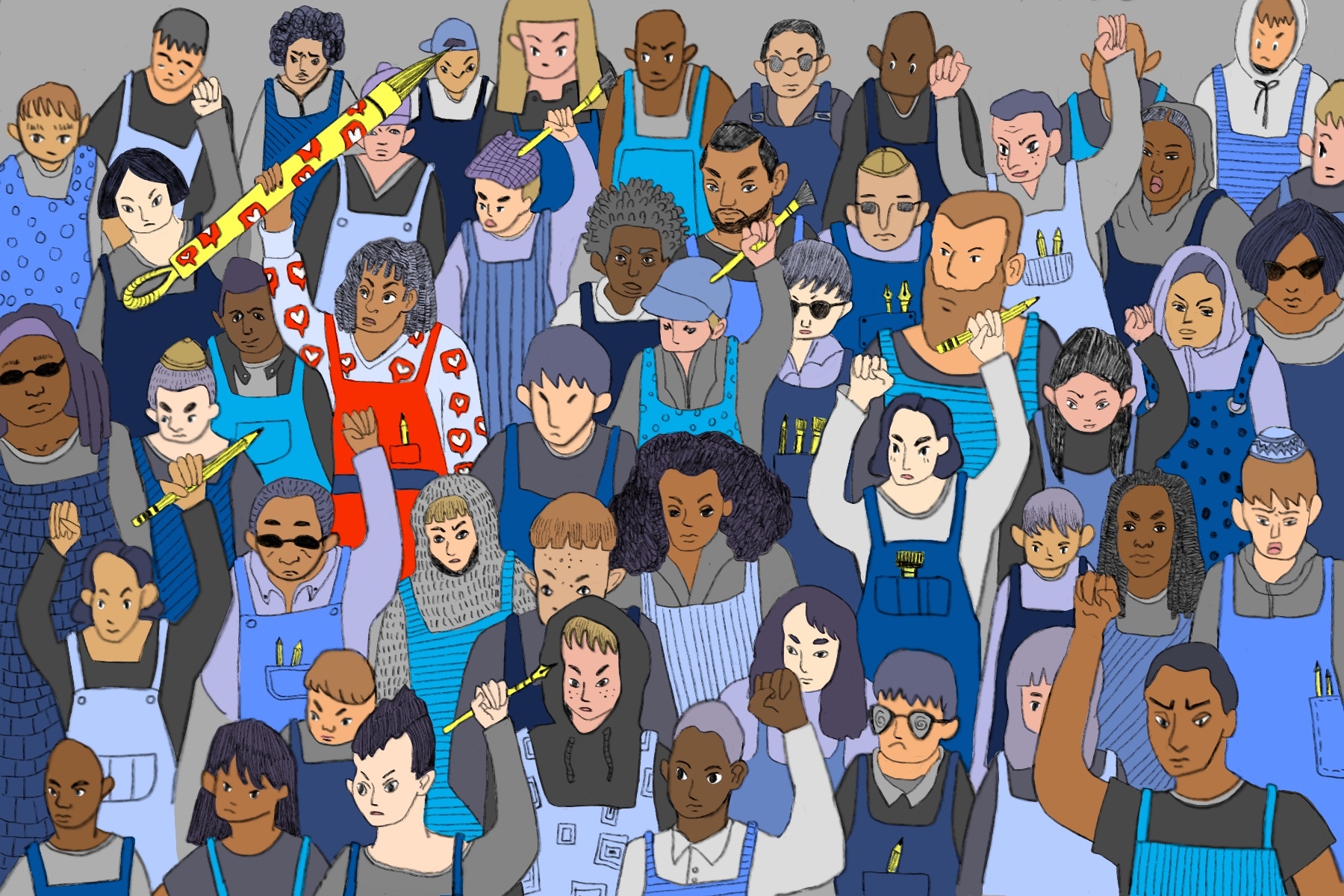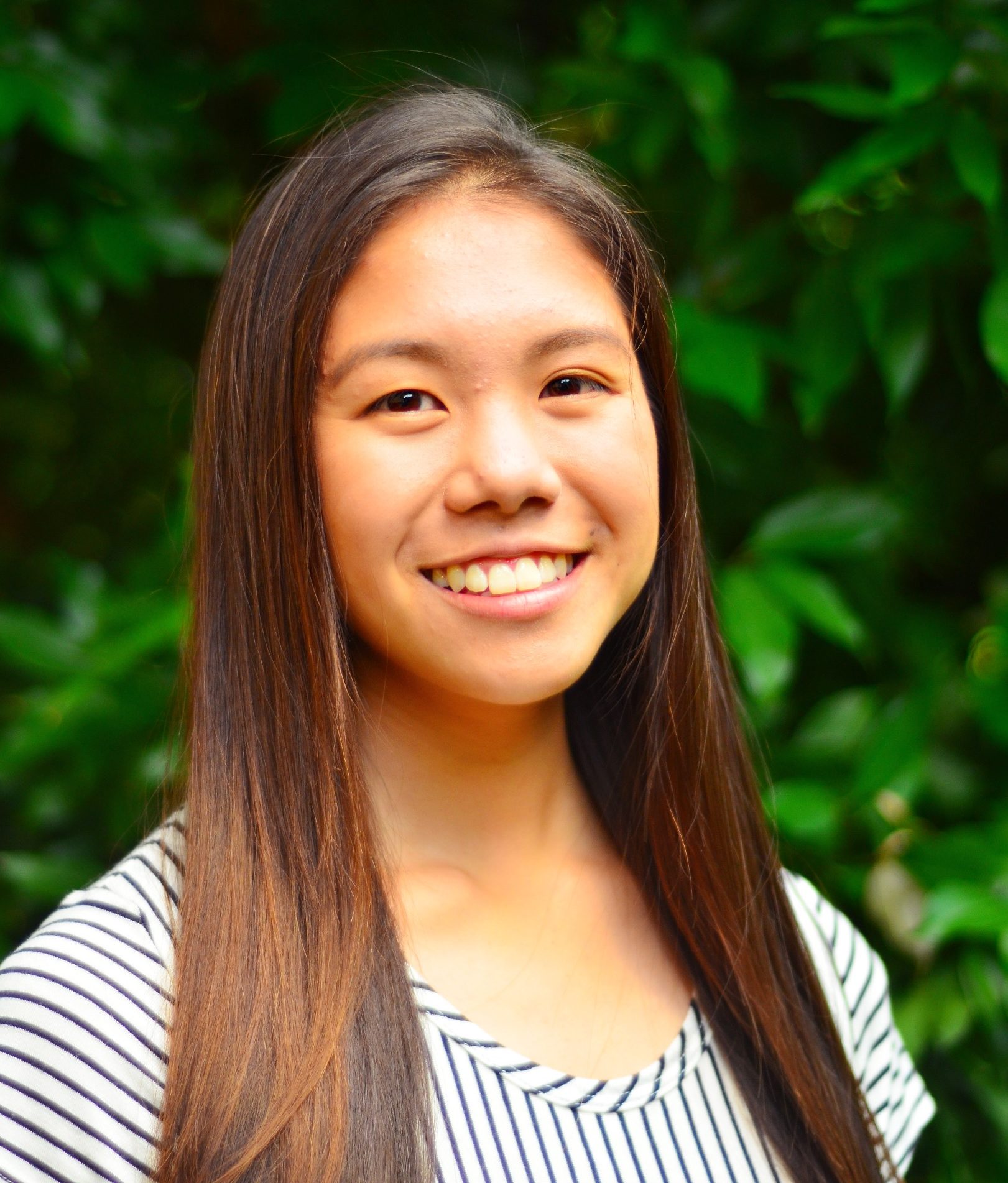Within the last several months, Breonna Taylor, Ahmaud Arbery and George Floyd have become the most recent individuals killed in America’s long history of violence against people of color. The Black Lives Matter movement has resurged with newfound strength on social media and across the internet.
This time, though, heartbreaking videos of George Floyd’s murder weren’t the only things popping up on people’s feeds; many people discovered the news through art. Whether it was painted portraits tagged #JusticeforGeorge or abstract art meditating on the Black Lives Matter movement, social media art played a powerful role in spreading awareness.
Millions are sharing resources on the Black Lives Matter movement on their social media accounts — and many of those posts come in the form of beautiful paintings like the “Justice for Ahmaud” portrait by artist Shirien Damra. Her recent portrait of George Floyd has been liked by over 3 million people. And she’s just one of many: Nikkolas Smith, Dani Coke, Robin Hilkey, Adrian Brandon and countless other artists on Instagram are using their skills to make critical race theory more accessible and engaging to the everyday social media consumer.
https://www.instagram.com/p/B_1OOjSAuOK/?utm_source=ig_embed&utm_campaign=loading
Whether they’re illustrating their own thoughts on social justice, like Morgan Harper Nichols, or they’re visually representing the words or ideas of someone else, pioneering artist-activists are continuing to explore the intersection of art and theory. Their art can act as an eye-catching entry point for those new to the movement, provide a safe and even uplifting alternative to triggering footage or imagery and encourage viewers to sit with the emotional weight of this abuse.
Artists have illustrated and amplified the Black Lives Matter project since it was founded in 2013. Three years into the movement, the Washington Post rounded up 13 pieces of art from the multitudes posted across the internet. The compilation proves that, as early as Trayvon Martin’s death, artists have been using their creative practices to express their grief and anger at the numerous crimes against Black people. Art and Black Lives Matter have been intertwined from the beginning.
Unfortunately, backlash existed as much then as it does now. When creative artists took to social media to share their artistic responses, their assertions didn’t go unnoticed. When the NYPD officer who killed Eric Garner was formally charged, Carson Ellis posted a drawing of 20 Black victims of police brutality. Although it was retweeted over 200 times, not everyone received the message well. In her interview with the Washington Post, she mentioned that she got “plenty of backlash.” Despite the negativity, her piece successfully spread awareness to people who otherwise wouldn’t have known about the deaths of these people of color.
Posts like Ellis’ demonstrate that when protest art is shared on social media, its exposure — and awareness of the issues that prompted it — skyrockets. Platforms like Instagram and Facebook rely on visuals to communicate information. In particular, Instagram’s language is image-based just as much as it relies on text: Every post requires a photo, whether it’s a graphic with words, a smartphone snap or a black screen — as long as it fits into the standard, white-bordered square.
Images become especially important when, in cases like George Floyd’s, a picture determines whether someone pauses long enough to learn about a person’s death. An image can be the difference between scrolling on in ignorance and having one’s eyes opened to the blatant racism that still exists in the U.S. In the case of social media, the popular saying “A picture is worth a thousand words” is doubly true. Images themselves speak, but they can also prompt viewers to read captions, click through to other resources and start discussions.
https://www.instagram.com/p/CAqYhJoA2Us/
Why is social media art so effective? It could be because it’s simple, sensitive and shareable.
Just as certain writers give their audience the words to say when the readers can’t find their own, these images give social media users a message to share with others when they don’t have the capacity to express themselves. In the midst of shock, grief and outrage, sharing beautiful illustrations is a manageable way to show solidarity and spread the word.
Social media art also prompts a more contemplative and empathetic response to what otherwise might simply be received as another piece of news. Just as the process of viewing art prompts the reader to pause and focus on its components to make better sense of the whole, seeing a digital painting or collage of someone’s face encourages the viewer to stop scrolling and read the caption. Just as a Kerry James Marshall painting or a Leonardo da Vinci sketch demand time to analyze and appreciate, so too do the lives of men and women like George Floyd warrant attention and care — and immortalizing their personas, whether through colorful drawings or layered collages, encourages viewers to see them as valuable, worthy of time and tears.
Social media art can be a powerful mechanism for shifting the negative stereotypes about the victims of these violent crimes. Shirien Damra told ELLE that she created her portrait of Arbery because she wanted to capture his life in a positive, humane light. “I was afraid that people would only see the video and remember his soul being taken away from him,” she said. So she carefully chose every detail, from the pastel colors to the delicate flowers, to convey love and calmness — traits that rarely come across in portrayals of Black men. Though insidious preconceptions and compassion fatigue make for calloused reactions, Damra’s art calls for sympathy. Each portrait reasserts its honoree’s humanity.
Memorializing these individuals in works of art with gorgeous embellishments and vibrant colors preserves the subjects at their best. While the global community mourns their deaths and reels with anger at our country’s injustice, the pieces of art provide a defiant reminder that, even in the face of tragedy, beauty can persist. The atrocious behavior of others doesn’t mar the impact of the men’s and women’s lives on the people they loved or the way they served their communities. Artistic renderings of people like Taylor, Arbery and others encourage strangers around the world to remember them as people rather than as bodies that once held life.
That’s not to say that these pieces of social media art gloss over the pain and inspire only naive optimism. Celebrating each fallen individual is itself a protest. To creatively commemorate Arbery, Taylor and Floyd is to assert the value of every Black life amidst a national system that does not grant all Black people equal opportunities or defend their basic rights and has not treated them as equally human over the course of history. To create art with Black subjects is to highlight the beauty of Black skin and Black culture amidst a gallery of historical imagery that has often caricatured, animalized or simply excluded Black people. To share this art is to provoke others to shared grief and outrage at the prejudice and systemic issues that cut those precious lives short.
Social media art immortalizes these individuals’ legacies while acknowledging the injustice of the crimes that took their lives.
As more and more creators make art to advance social justice movements, like Black Lives Matter, on Instagram, they demonstrate the power of the platform to do more than entertain: Social media is becoming the place to educate, humble, start conversations and spark real action. Ultimately, the artists are equipping others with the knowledge and empathy necessary to move beyond the likes and shares — and take lasting antiracist action.

















